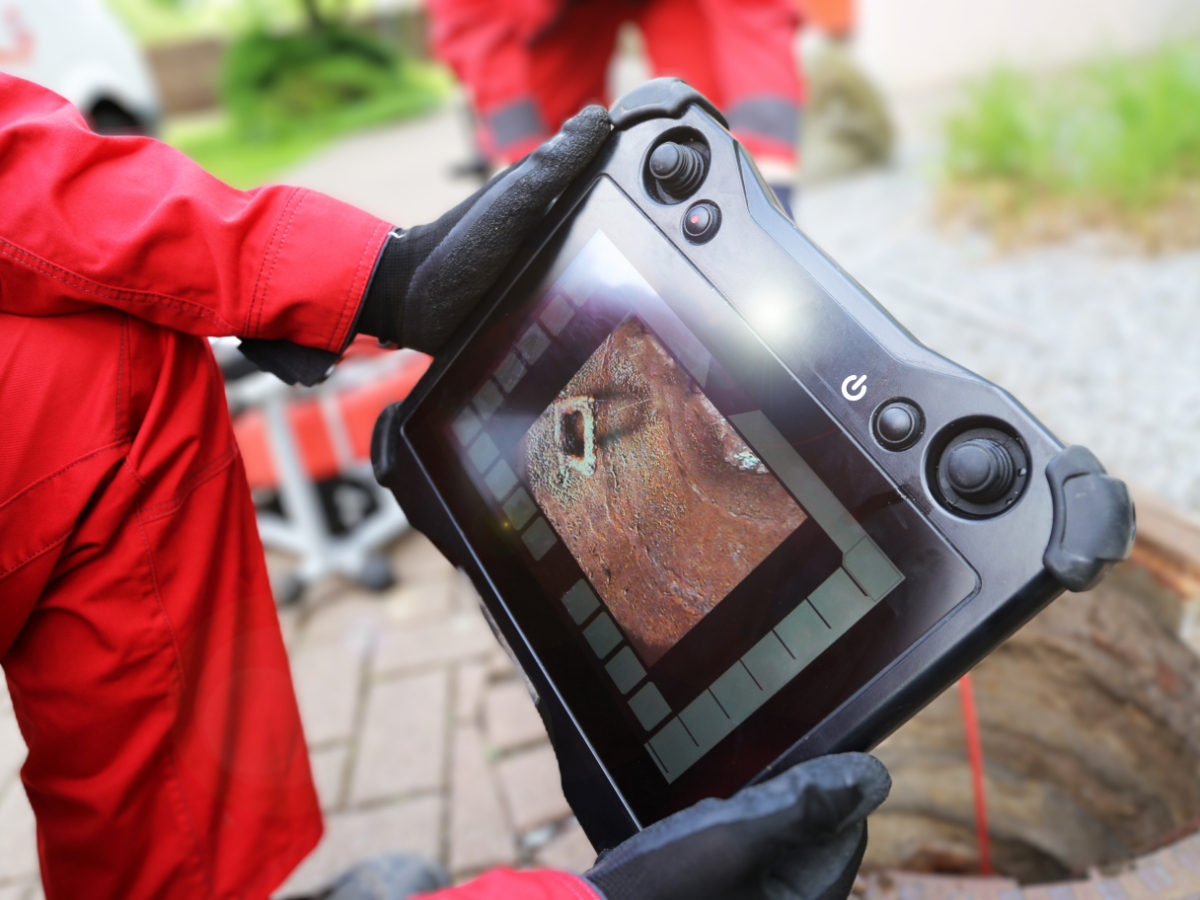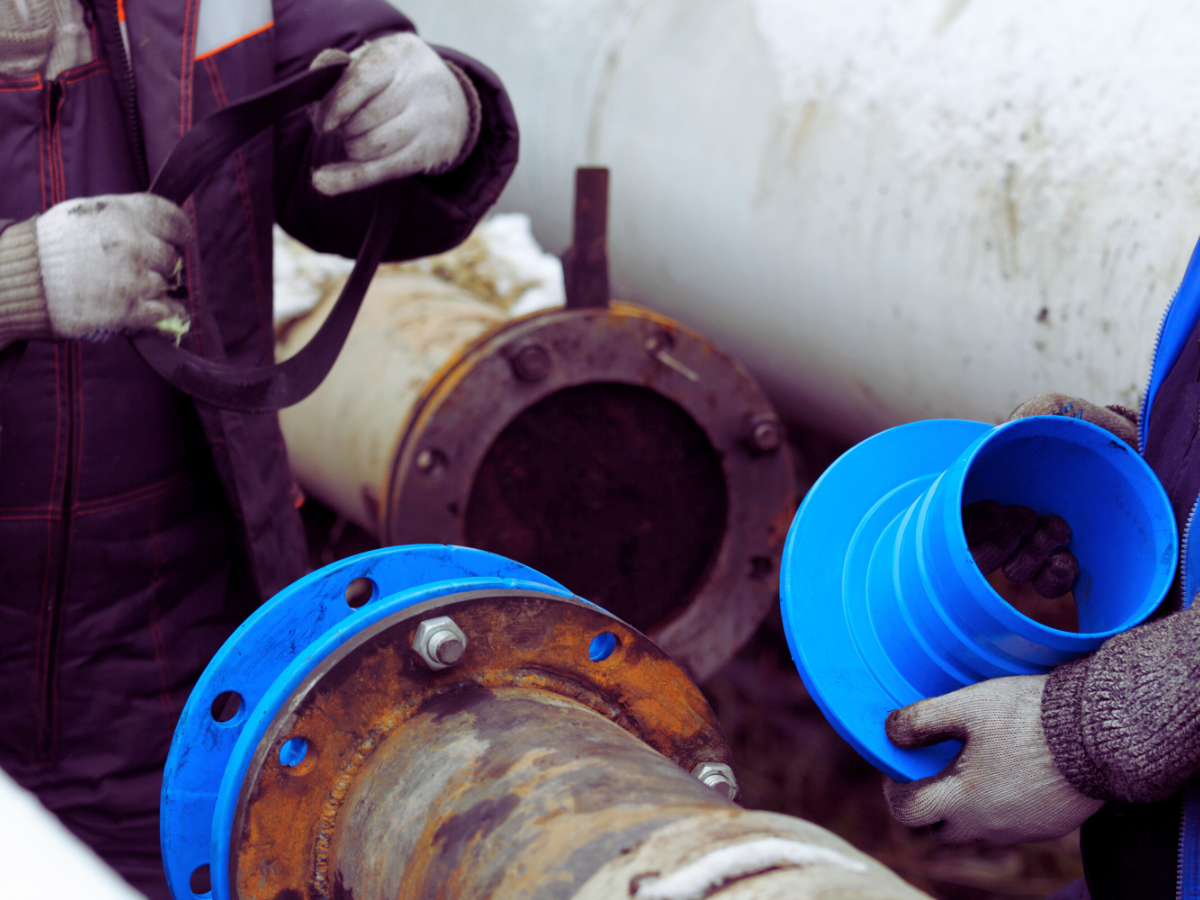 While it lurks in hiding most of the time, your sewer line plays a vital role in your home’s plumbing system. After water is used, sewer lines are responsible for removing wastewater from your home. If the pipe becomes damaged by corrosion, roots, age-related wear, or other kinds of damage, you’ll need to get it replaced.
While it lurks in hiding most of the time, your sewer line plays a vital role in your home’s plumbing system. After water is used, sewer lines are responsible for removing wastewater from your home. If the pipe becomes damaged by corrosion, roots, age-related wear, or other kinds of damage, you’ll need to get it replaced.
Key Signs You May Need a Sewer Line Replacement
As soon as you notice slow drains in multiple locations, wet spots in your lawn, odd sewage odors, or frequent backups, you need to reach out for professional help right away.
1. Multiple Slow or Clogged Drains
Pay attention to clogged drains. If this issue happens in your showers, toilets, sinks, and tubs at the same time, it indicates a main line problem instead of an issue with an individual fixture.
2. Sewage Backups Inside the Home
If raw sewage backs up from your shower, floor drains, or tub, it is a sign of a major sewer line issue. You need to call Benjamin Franklin Plumbing right away for professional help.
3. Sewer Gas Odors Indoors or Outdoors
One common indicator of sewer line problems is the smell of sewage.
4. Lush or Soggy Patches in Your Lawn
When sewage leaks into your lawn, it ends up fertilizing the grass. This can lead to soft, wet ground and lush grass.
5. Inexplicable Pest Activity
Sewage leaks attract rodents and insects, so a sudden pest infestation means you may have a problem.
6. Mold or Mildew Growth Indoors
The added moisture from a sewer leak can result in water damage, mold, and mildew.
7. Cracks in Your Home’s Foundation
Thanks to the increased water and sewage, your property can develop soil erosion. This can destabilize your home and lead to leaking sewage.
Common Causes of Sewer Line Failure
 While each situation is different, there are a few possible reasons why sewer issues occur.
While each situation is different, there are a few possible reasons why sewer issues occur.
Root Intrusion
Over time, tree roots can penetrate your sewer pipes. This causes small cracks to start leaking water. Often, this happens to older cast-iron or clay pipes.
The Pipe’s Material or Age
You can generally expect different types of pipes to achieve the following lifespans before they begin running into problems.
- Clay: 50 to 60 years
- Cast Iron: 75 to 100 years
- Orangeburg: 30 to 50 years
- PVC: 100 years or more
Corrosion and Natural Wear
Over the decades, rust and mineral buildup can develop inside the walls of your pipes. Besides reducing the flow rate, it can also weaken the pipe’s walls and lead to leaks.
Natural Disasters and Settling Soil
If a flood, earthquake, or construction damage causes the soil to move, it can damage your pipes.
Repair Vs. Replacement: How To Decide
Once you realize that you have an issue with your sewage system, the first step is determining whether you want to repair or replace it.
When To Perform Repairs
Repairs make more sense for localized damage and minor cracks. If the general pipe structure is still sound, you can often repair the problem.
When To Perform a Replacement
A replacement makes more sense if you’re dealing with repeated pipe failures and widespread damage. Additionally, you should replace the pipes once they reach the end of their typical lifespan.
Sewer Line Replacement Methods
 Once you decide to perform a replacement, there are a few standard methods that you can use. One of our plumbers will review the best options for your situation before we begin working on your project.
Once you decide to perform a replacement, there are a few standard methods that you can use. One of our plumbers will review the best options for your situation before we begin working on your project.
Traditional Excavation
A traditional excavation offers full access to the pipes, making the complete removal of sewage pipes easier. However, this approach can take longer and lead to landscaping damage.
Trenchless Sewer Replacement
Trenchless sewer replacements involve the least amount of digging, so you can enjoy a faster turnaround time. This technique is best for instances when you’re dealing with a burst pipe or a localized issue.
Steps To Take if You Suspect a Sewer Line Problem
If you think that you may have a sewer line issue, you should immediately take the following steps.
- Stop using any plumbing fixtures in your home to prevent sewage from backing up.
- Reach out to our licensed plumbers for a professional camera inspection.
- Ask for a cost estimate for a repair or replacement.
- Carefully compare both prices to determine which one makes the most sense for your home.
How To Prevent Future Sewer Line Issues
Once you’ve solved your existing sewer line issue, the next step is figuring out how to avoid it in the future.
- Don’t plant large trees next to your sewer lines.
- Schedule a routine inspection every two to three years.
- Make sure you dispose of fats, grease, bits of food, and non-flushable items correctly.
FAQs About Sewer Line Replacement
Over time, we’ve heard a few common questions about sewer line replacements.
How long does a sewer line last?
Sewer lines can last for 30 to 100 years. It all depends on the material.
How much does a sewer line replacement cost?
A sewer line replacement can vary significantly based on all of the work that needs to be done. Often, this type of project costs between $3,000 and $6,000.
Can I replace a sewer line myself?
To ensure the best results, it’s generally better to have your sewer line replaced by plumbing experts.
How long does trenchless replacement take?
A trenchless replacement can take anywhere from one to two days to wrap up.
Breathe Easy With the Help of Benjamin Franklin
 If the damage is impossible to repair, the sewer line needs to be completely replaced. You can figure out if you have a problem by looking for soggy spots, recurring clogs, or slow drains. By getting a professional inspection early, you can save money and protect your property.
If the damage is impossible to repair, the sewer line needs to be completely replaced. You can figure out if you have a problem by looking for soggy spots, recurring clogs, or slow drains. By getting a professional inspection early, you can save money and protect your property.
For sewer line replacements in Gainesville or the surrounding areas, give the punctual plumbers at Benjamin Franklin Plumbing a call.